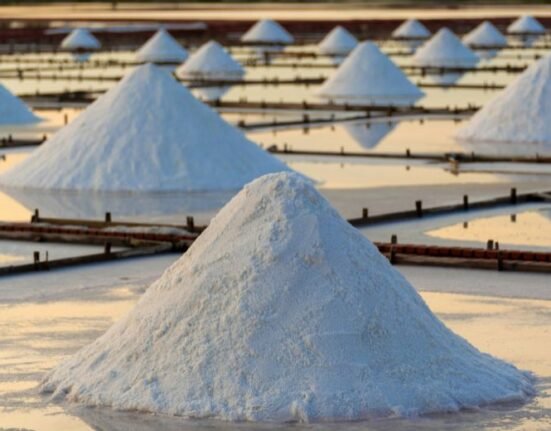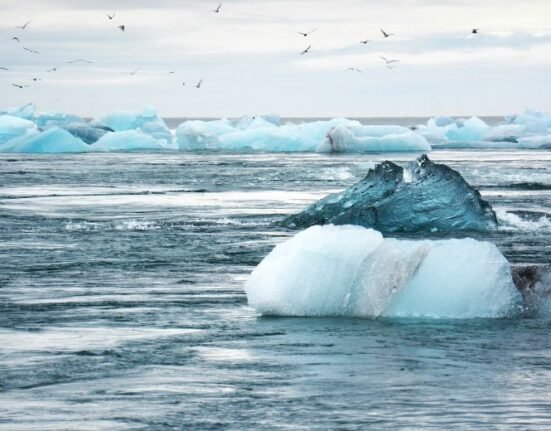HQ Team
July 17, 2024: Climate change is making days longer by a few milliseconds as the ice melts in Antarctica and Greenland is causing a shift in Earth’s mass with more water flowing into the world’s oceans, especially the equatorial region, according to a study by the University in Zürich, Switzerland.
A shift in the mass is affecting the Earth’s rotation, said Benedikt Soja, Professor of Space Geodesy at the Department of Civil, Environmental and Geomatic Engineering at ETH Zurich. The speed of rotation, which was so far mainly influenced by the moon, will now also depend much more on the climate, according to a university statement.
“It’s like when a figure skater does a pirouette, first holding her arms close to her body and then stretching them out,” Soja said.
“The initially fast rotation becomes slower because the masses move away from the axis of rotation, increasing physical inertia. In physics, we speak of the law of conservation of angular momentum, and this same law also governs the Earth’s rotation.
“If the Earth turns more slowly, the days get longer. Climate change is therefore also altering the length of the day on Earth, albeit only minimally,” he said.
86,400 seconds
Researchers found that climate change was increasing the length of the day by a few milliseconds from its current 86,400 seconds. “This is because water is flowing from the poles to lower latitudes and thus slowing down the speed of rotation.”
Tidal friction, which is triggered by the moon, is another cause of this slowdown.
The study revealed that if humans continue to emit more greenhouse gases and the Earth warms up, it would ultimately have a greater influence on the Earth’s rotational speed than the effect of the moon, which has determined the increase in the length of the day for billions of years.
“We humans have a greater impact on our planet than we realise,” said Soja, “and this naturally places great responsibility on us for the future of our planet.”
For ten years leading up to 2011, central-north Greenland warmed the most when compared to the past 1,000 years, according to researchers led by the Alfred Wegener Institute. The region is now 1.5 degrees Celsius warmer than during the 20th century.
Record lows in Antarctica
The Greenland Ice Sheet stores about 3 million cubic kilometres of water. When ice melts, the sea levels rise, and this is projected to contribute up to 50 centimetres to the global mean sea level by 2100.
On February 20, 2024, the minimum Antarctic sea ice extent was 1.99 million square kilometres (768,000 square miles). The three minimums set in 2022, 2023, and 2024 are the three lowest in the 46-year record.
The previous record low, with the ice reaching 1.79 million square kilometres (691,000 square miles) was mapped on February 21, 2023, according to the National Snow and Ice Data Center.
The shifts in mass on the Earth’s surface and in its interior caused by the melting ice not only change the Earth’s rotational speed and the length of day they also alter the axis of rotation, according to the Zurich researchers.
“This means that the points where the axis of rotation meets the Earth’s surface move,” according to the researcher’s statement. “Ongoing climate change could therefore even be affecting processes deep inside the Earth and have a greater reach than previously assumed.”
Space travel impact
However, there is little cause for concern, as these effects are minor and it’s unlikely that they pose a risk, said Mostafa Kiani Shahvandi, one of Soja’s doctoral students and lead author of the study.
The slowing down in rotation may have an impact on space travel.
“Even if the Earth’s rotation is changing only slowly, this effect has to be taken into account when navigating in space – for example, when sending a space probe to land on another planet,” Soja said. “Even a slight deviation of just one centimetre on Earth can grow to a deviation of hundreds of metres over the huge distances involved. Otherwise, it won’t be possible to land in a specific crater on Mars.”
For the study, the researchers used what is known as physics-informed neural networks. These are novel artificial intelligence methods in which researchers apply the laws and principles of physics to develop particularly powerful and reliable algorithms for machine learning.








